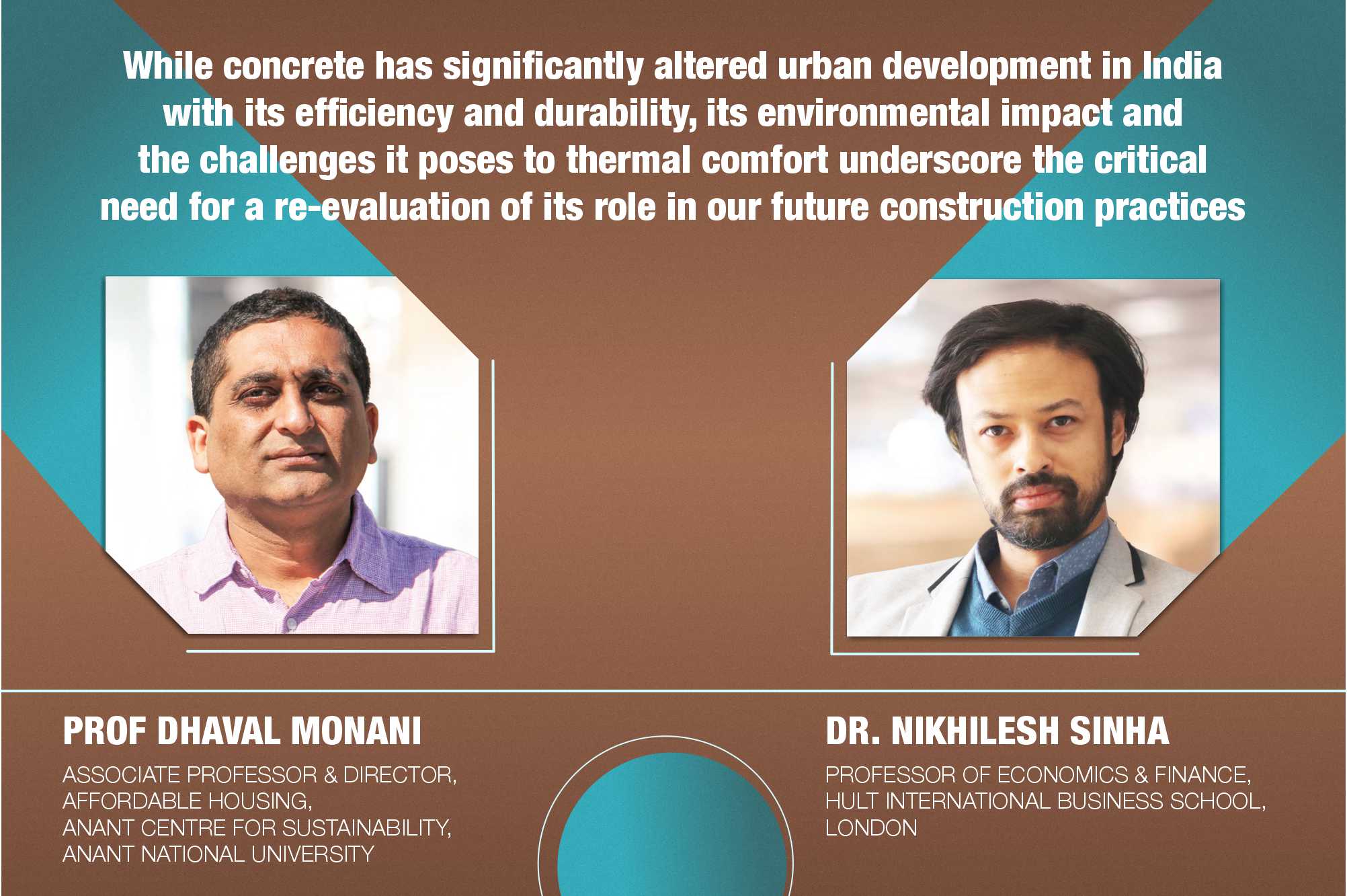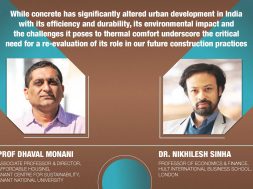A concrete question

While concrete has significantly altered urban development in India with its efficiency and durability, its environmental impact and the challenges it poses to thermal comfort underscore the critical need for a re-evaluation of its role in our future construction practices.
The term concrete jungle is becoming an increasingly apt description for Indian cities. Yet, with the rapid pace of urbanisation (a growth of almost 20 percent in the last decade), demand for both infrastructure and housing far outpaces demand. The predominant use of concrete stems from its versatility, availability of raw materials, ease of use, resilience, and, most importantly, the speed at which construction can take place. High-grade concrete construction requires technical expertise but offers the advantages of a more streamlined process and can be more efficient in terms of space utilisation. In the case of housing construction, the carpet area can be maximised, reducing wall thickness from 225 mm to 125 mm, as compared with traditional construction methods, such as brick and mortar. Yet the question of whether concrete is ideal for Indian conditions requires further scrutiny.
The use of concrete to construct Indian homes began in the early 20th Century, and this is now the predominant building material. A National Sample Survey study found that nearly 97 percent of urban homes are pucca, and a majority of these are built of concrete. Aside from the material’s durability, the protection offered from inclement weather, and the possibility of building upwards, concrete houses also accord a higher social status.
On the other hand, concrete is a good conductor of heat and has low thermal resistance, meaning that concrete homes tend to heat up quickly in summer and offer little protection from either heat or cold. This can be mitigated by insulation or cladding on the exterior and air conditioning the interior. At the same time, this is standard in higher-end homes; low-income or affordable homes rarely afford this luxury, subjecting poorer households to the extremities of climate. In addition, affordable housing projects tend to maximise land utilisation to keep costs low, resulting in the southern facade of homes that lie directly in the path of the sun, tend not to be shaded or insulated and are exposed to direct radiation.
It is not just the issue of heat. Delhi, for instance, experiences a seasonal variation of temperatures from 500C at the height of summer, and temperatures drop to a few degrees above zero in winter. Aside from the issue of thermal comfort within concrete structures, there is also the issue of maintaining structural integrity. Concrete structures are typically reinforced with steel, expanding and contracting significantly with large temperature variations. These expansions and contractions create fissures and cracks over time, which is why the page remains a perennial problem in Indian construction. Concrete structures also tend to be less flexible for adoption or change compared to more conventional forms of construction.
The elephant in the room is the non-sustainable nature of concrete and the massive contribution of the construction industry to global greenhouse gas emissions. Last year, a report by the United Nations Environment Programme (UNEP) found that the building and construction sector accounts for 37 percent of global emissions. The total amount of “embodied” carbon emissions originating from the design, production, and deployment of materials such as cement, steel, and aluminium is staggering.
As we witness the urgency and significance of climate change impacts, particularly on the poorest residents of Indian cities, it becomes imperative for us in India to lead the change. This should prompt a re-evaluation of the suitability of current concrete-centred construction techniques on a global level.
For more information , Visit :https://anu.edu.in/
Cookie Consent
We use cookies to personalize your experience. By continuing to visit this website you agree to our Terms & Conditions, Privacy Policy and Cookie Policy.







